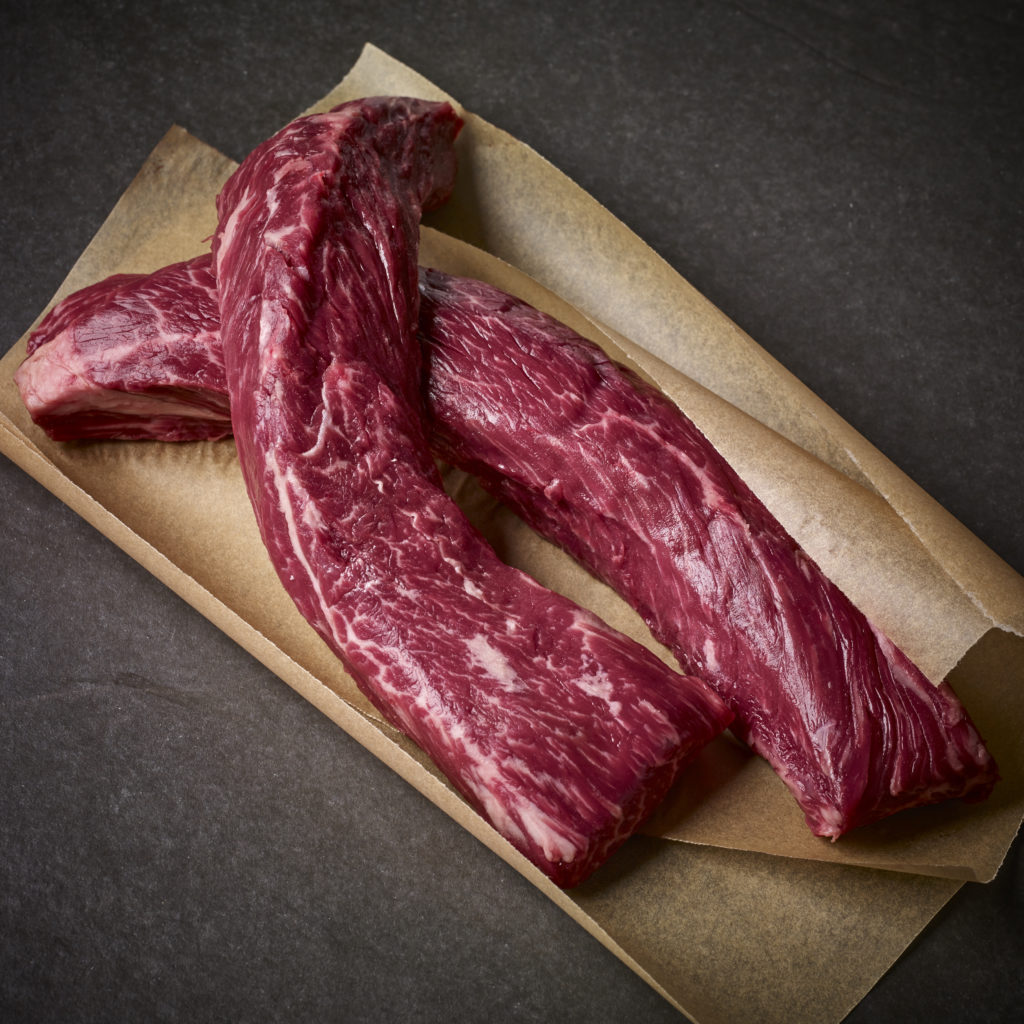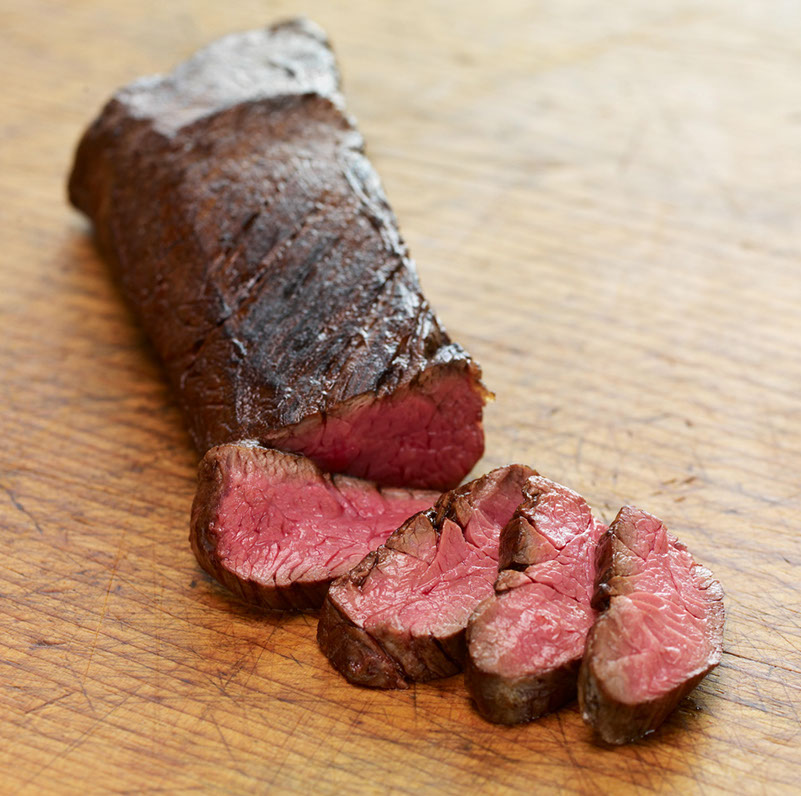The Lobel family of Lobel’s Prime Meats in Manhattan and Lobel’s of New York online butcher shop are fourth- and fifth-generation butchers. With our Cut of the Month series, we will bring you their wealth of knowledge and expertise on specific cuts of meat, including their unique characteristics, preparation methods, and how to select the best cut.
Did you know that hanger steaks are also called “butcher’s tenderloin” or “butcher’s steak” because before this cut was “discovered” by the general public, butchers very often held back the tasty but homely cuts for themselves and their families?

In France, hanger steak is know as onglet. Since chefs and steak lovers made hanger steaks popular, they have acquired a degree of panache.
Hanger steaks, favored for their great rich flavor, are thicker than skirt steaks and lie next to the kidney and the short loin–or actually “hang” between the rib cage and loin cage. There is only one hanger steak in each steer.
It is a chunk of beef that measures 3 1/2 inches at its thickest point. A thick vein or sinew runs through the center of the meat, which should be removed by a butcher, as it is unpleasantly tough and chewy. This means you will end up with two pieces.

They are nice and juicy, especially when cut from prime beef; unless the hanger steak is prime beef, we believe it should be marinated. It’s excellent on the grill, but can also be cooked in the broiler. Its uneven, tapered shape makes it ideal for families who like their meat cooked to different degrees of doneness.
If you can bear to grind it, hanger steaks make incredibly juicy hamburgers. We like to make huge 12-ounce burgers and char them on the grill. They are about as succulent as it gets.
If you’re looking to try hanger steak, start with our recipe for a simple Grilled Hanger Steak or our more adventurous Thai-Style Marinated Hanger Steak.
Have you tried hanger steak? What’s your favorite way to prepare hanger steak?



Leave Your Response